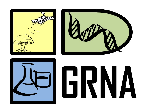Banca de DEFESA: ANDRESSA JAQUELINE VIANA DE SOUZA
Uma banca de DEFESA de MESTRADO foi cadastrada pelo programa.STUDENT : ANDRESSA JAQUELINE VIANA DE SOUZA
DATE: 31/08/2023
TIME: 14:00
LOCAL: Sala 345B - Sala Multimeios da PROPPIT/BMT2
TITLE:
ECOPHYSIOLOGY OF ARECACEAS IN INDIGENOUS ENVIRONMENT
KEY WORDS:
Arecaceae, Flavonols, Anthocyanins, Total Chlorophyll.
PAGES: 75
BIG AREA: Outra
AREA: Ciências Ambientais
SUMMARY:
In the context of the vast biodiversity of the Amazon biome, the botanical family Arecaceae stands out with significant socio-economic value for local communities. Despite its remarkable economic and ecological importance, which ranks it among the most significant in the world, there is still a lack of comprehensive studies on its physiological characteristics, such as the composition of secondary metabolites, including chlorophyll and leaf polyphenols, such as the class of flavonoids, which include the subclasses of flavonols and anthocyanins. The present study aimed to characterize the indices of four eco-physiological parameters, namely: Nitrogen Balance Index, Total Chlorophyll Index, Flavonol Index, and Anthocyanin Index in the leaves of four species of palms located in the Munduruku Indigenous Territory of Planalto, in Santarém, Pará. This territory encompasses floodplain and upland areas, accessible via PA-370 Highway, and borders other communities, quilombos, and settlements. Four species of Arecaceae of socio-economic importance and bio-economic potential were selected and identified: Attalea speciosa Mart. ex Spreng (Babaçu), Oenocarpus bacaba Mart. (Bacaba), Bactris gasipaes Kunth. (Pupunha), and Astrocaryum aculeatum G. Mey. (Tucumã). Measurements were taken in November 2022, between 8 a.m. and 12 p.m., on three individuals of each species, totaling 12 palm trees. Two measurements were taken on each selected individual, on the abaxial and adaxial sides of the leaves, using the DUALEX® Force A chlorophyll meter. The measured data were analyzed using BioEstat® software version 5.3, through Descriptive Statistics and Analysis of Variance (ANOVA) with one criterion for the four species, ANOVA with two criteria to compare the adaxial and abaxial sides of the leaves, as well as multivariate analyses, including the calculation of the Bartlett, Penrose, and Mahalanobis coefficients, and the Pearson correlation matrix. The obtained results allowed us to infer that there are significant differences in the composition of eco-physiological parameters among the species. Regarding the Nitrogen Balance Index (Nbi), the B. gasipaes species stood out with the highest index on both sides of the leaves. On the other hand, the A. aculeatum palm demonstrated a higher photosynthetic efficiency, indicated by the higher Total Chlorophyll Index (Chl). With respect to polyphenols, flavonols, and anthocyanins, the A. aculeatum and O. bacaba palms showed the highest leaf levels. No significant differences were observed between the studied parameters when considering the leaf sides."
COMMITTEE MEMBERS:
Externa ao Programa - 1623255 - CRISTINA ALEDI FELSEMBURGH - nullPresidente - 1178274 - PATRICIA CHAVES DE OLIVEIRA
Externo ao Programa - 2280178 - TULIO SILVA LARA - null




